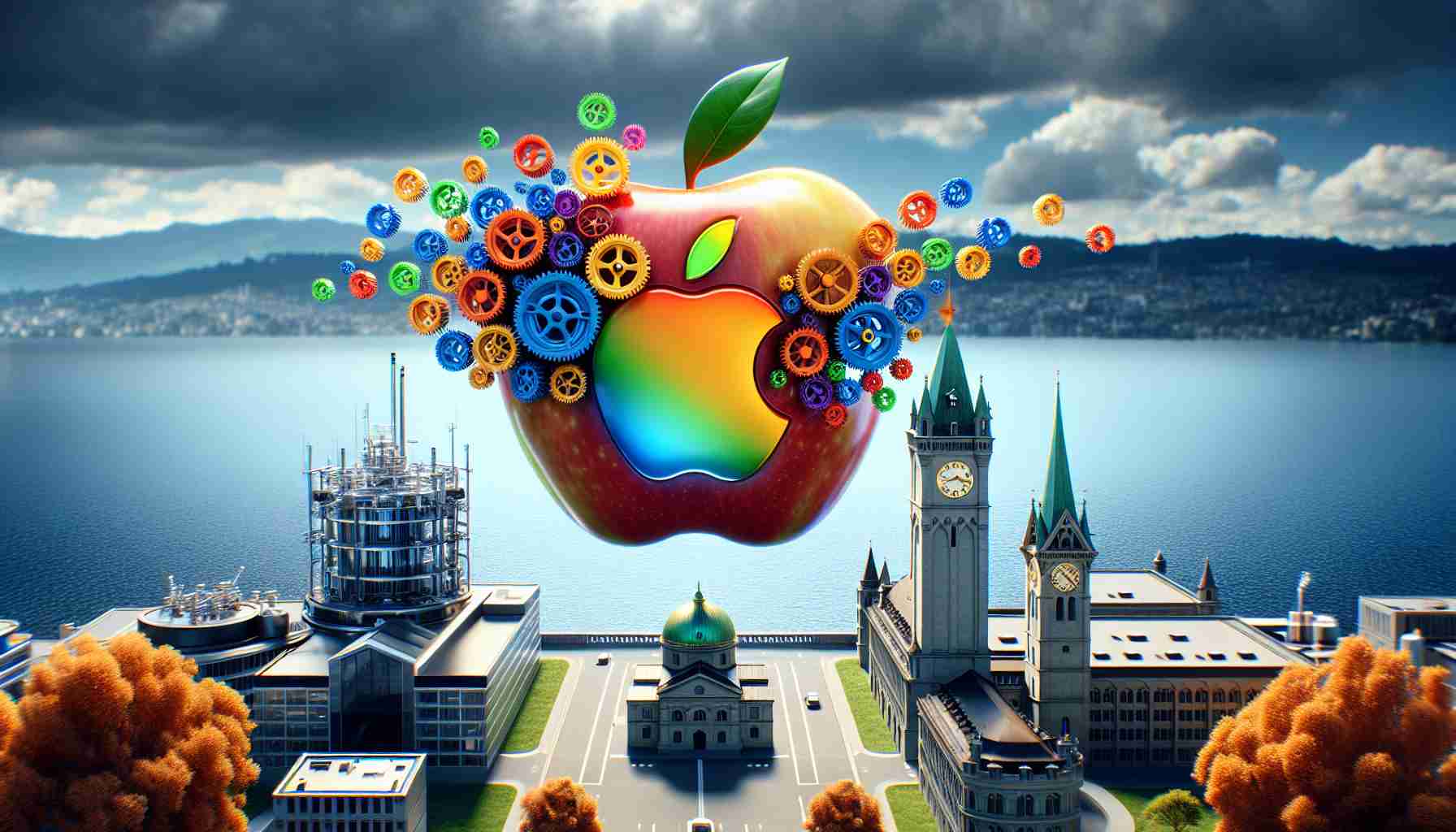Apple’s prowess in AI advancements now reflects in its ability to draw top AI engineers from Google, outstripping other tech rivals in a strategic hiring spree. Since appointing ex-Google executive John Giannandrea as SVP of Machine Learning and AI Strategy in 2018, nearly 40 AI specialists have transitioned from Google to Apple, a trend that outshines the company’s recruitment from Amazon and Microsoft.
In this talent accumulation race, Apple’s AI workforce, primarily based in California and Seattle, is also significant in Switzerland. The Zurich labs, including the so-called “Vision Lab,” are hubs for Apple’s secretive AI work. Their establishment was influenced by the acquisition of two Swiss AI firms, FaceShift and Fashwell, known for motion capture and image recognition prowess, respectively.
The current Apple hardware offering, known as Vision Pro, employs advanced camera technology for creating 3D facial imaging, and works with VisionOS software. However, the exact connection between the Vision Lab’s activity and Vision Pro’s technology remains undisclosed. Industry observers speculate on the variety of AI-related projects Apple might be pursuing, including those involving its historical autonomous car project.
Notably, Apple’s job postings signal continued AI ambitions, with the Zurich-based Human and Object Understanding (HOUr) team seeking AI engineers for tasks ranging from real-time object detection to gaze understanding. These ventures hint at Apple’s focus on both foundational and cutting-edge AI applications throughout its ecosystem.
While Apple’s AI initiatives may be shrouded in secrecy, there’s unmistakable evidence of their development trajectory. Recently, Apple showcased their OpenELM artificial intelligence models, further underscoring their depth in AI research. Expectations are high for the next-gen M4 computer chips with enhanced AI capabilities, which may revolutionize in-device AI operations and pave the way for improved Siri and Spotlight search features in the forthcoming iOS18 update.
Apple’s acquisition strategy continues unabated, with about two dozen AI startups absorbed in the last decade. The most recent takeover includes Canadian AI startup DarwinAI, further reinforcing Apple’s drive to dominate the AI technology front.
Apple’s Strategy & Talent Accumulation
Apple’s aggressive recruitment of AI talent from Google highlights the wider tech industry struggle for leading expertise in artificial intelligence. Apple’s strategy, especially after John Giannandrea came on board, seems to focus on integrating AI across its many products and services. The movement of nearly 40 AI specialists from Google to Apple not only indicates Apple’s attractiveness as an employer but also hints at Google’s possible challenges in retaining talent.
Zurich’s Role in Apple’s AI Development
The Zurich labs’ importance underscores Switzerland’s growing reputation as an AI hub, fueled partly by the country’s strong educational institutions like ETH Zurich. The acquisition of FaceShift and Fashwell allowed Apple access to technologies and talents enhancing their AI capabilities, including motion capture for animation and image recognition for product searches.
Product Developments and Speculations
By investing in advanced camera technology and facial imaging through Vision Pro, Apple has strengthened its offering in user interaction and security. The connection between the Vision Lab and Vision Pro, while not officially confirmed, suggests a strong focus on image processing and analysis within AI research and development at Apple.
AI Applications in Apple’s Ecosystem
The job postings in Zurich allude to various aspects of AI that Apple is keen to explore, such as real-time object detection. This could have applications across their range of products from iPhones to the potential Apple Car. If AI can be implemented effectively, it could lead to a more intuitive user experience and push Apple’s products ahead of the competition.
Apple’s AI Research Evolution
The announcement of OpenELM models and the expectations around the M4 computer chips exemplify Apple’s evolution from a hardware-first company to one that prominently values software and AI capabilities. An improved Siri and Spotlight search would represent significant strides in user interface design, making AI a seamless aspect of interaction with Apple devices.
Apple’s Acquisition Pattern
The pattern of acquisitions, such as the recent one of DarwinAI, signifies a dual strategy: bolsters in-house AI expertise while possibly eroding the competitive landscape by absorbing potential rivals.
Important Questions and Challenges
The primary questions surrounding Apple’s AI advancements and talent hiring include the extent of their AI development and how it will translate into consumer experiences. Challenges involve talent retention and competition with other AI leaders, safeguarding innovation from tech giants that could monopolize the space, and handling privacy concerns that AI technology might raise.
Advantages and Disadvantages
– Advantages: Apple’s recruitment strategy strengthens its AI research, potentially leading to innovative features and maintaining its competitive edge. Hiring from a leader like Google also brings in experienced talent familiar with working at scale.
– Disadvantages: By focusing on talent from a single company, Apple might limit its perspective on AI. Additionally, integrating new team members from a competitor can pose cultural challenges within the existing company structure.
To learn more about Apple’s initiatives and developments, you can visit the official website with the link: Apple.

